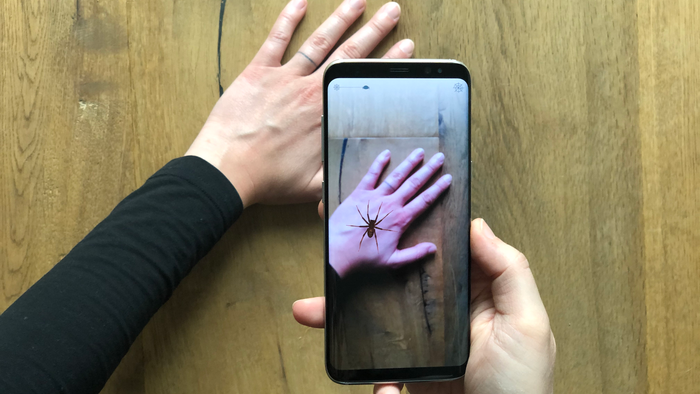
Arachnophobia, an exaggerated fear of spiders and other arachnids, has long been treated by psychologists with desensitization and relaxation techniques, but these may now give way to therapy via smartphone.
At the University of Basel in Switzerland, researchers have developed an augmented reality app for smartphones to help treat arachnophobia, which showed success during the clinical trial. The subjects demonstrated reduced fear of the menacing bugs after using the app at home.
The app, called Phobys, is described in the Journal of Anxiety Disorders. “It’s easier for people with a fear of spiders to face a virtual spider than a real one,” said lead author Anja Zimmer. She and the other researchers reported promising results.
Arachnophobia is a common phobia that imposes real limitations on sufferers. Fear of spiders can lead some to avoid social gatherings, limit travel or excessively check rooms for signs of spiders. Even a photograph of a spider or evidence of its presence, such as webs, can trigger responses that include screaming, fainting, sweating and heart palpitations.

Therapeutic exposure to spiders to lessen phobia is rarely used, according to the authors, because patients don’t want to expose themselves.
The team, led by Professor Dominique de Quervain at Basel, conducted a clinical trial for two weeks, using Phobys with 66 subjects. All the subjects suffered from a fear of spiders and, over the course of two weeks, either completed six half-hour training units with Phobys or, in the case of the control group, had no intervention.
The subjects approached a real spider in a transparent box before and after each treatment but only got as close as their fear permitted them. The subjects using Phobys showed significantly less fear and disgust when exposed to a real spider and were able to get closer to it than members of the control group.

The nine levels on the Phobys app allow users to see and interact with virtual spiders. By progressing through the levels, the tasks on the app become more challenging. At the end of each level, there is an assessment of the user’s fear and disgust. But it is the app that decides whether users should repeat a level or move on.
The game-like Phobys app also offers encouragement in the form of animation and sound effects. Users experiencing a mild form of arachnophobia may use it on their own. However, the research team recommends that individuals with more serious symptoms use it under professional supervision.
The Phobys app allows users to test their phobia level at no charge, while training to reduce their fear of spiders can be purchased in the app.
The current study is one of several projects in progress at the University of Basel aimed at using new technologies to treat mental conditions.
Edited by Siân Speakman and Kristen Butler
The post Augmented Reality App Helps Reduce Fear Of Spiders appeared first on Zenger News.

